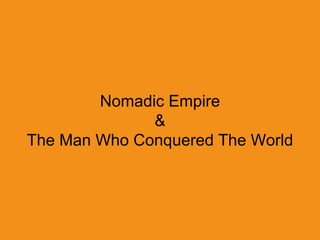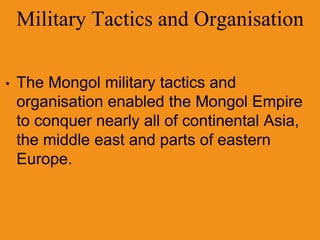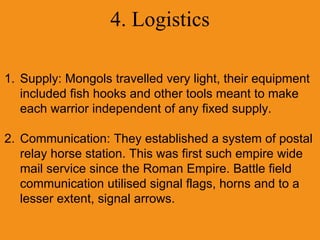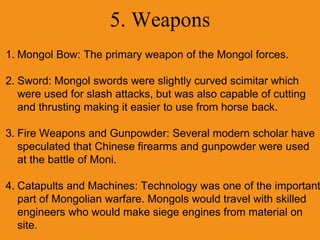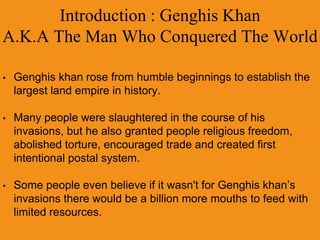The document provides information about the Nomadic Empire, also known as the Mongol Empire, and Genghis Khan, who was instrumental in establishing the empire. It discusses how Genghis Khan unified various nomadic tribes in Mongolia and began a campaign of conquest that expanded the empire across Asia and into Eastern Europe. By the time of his death in 1227, Genghis Khan had established the largest contiguous land empire in history that spanned from the Sea of Japan to the Caspian Sea. The empire had a significant impact by encouraging trade, spreading innovations, and establishing religious tolerance across Eurasia.
